La Violeta Eterna (and Terremotos!)
Finally, a chance to talk about what I really want to talk about: Violeta Parra.
I knew nothing of this woman prior to yesterday. Nothing. But we visited the museum dedicated to her, and I quickly began to view this Chilean badass as an inspiration. Learning about her was a thoroughly enjoyable experience.

Born in rural Chile in 1917, Violeta Parra was one of 10 children of a music professor father and a seamstress mother. Though she never finished school, she would eventually become a successful singer-songwriter, poet, musician, artist, and activist. Though composing and even playing instruments was traditionally a male’s job, she fearlessly taught herself guittarón (a complex guitar with 25 strings, some so small you can’t even see them, called “diablitos”) and wrote her own lyrics. She would later pioneer the genre “Nueva Canción,” which combined traditional folkloric music with political and social themes. Her most famous and recognized song is “Gracias a la Vida.”
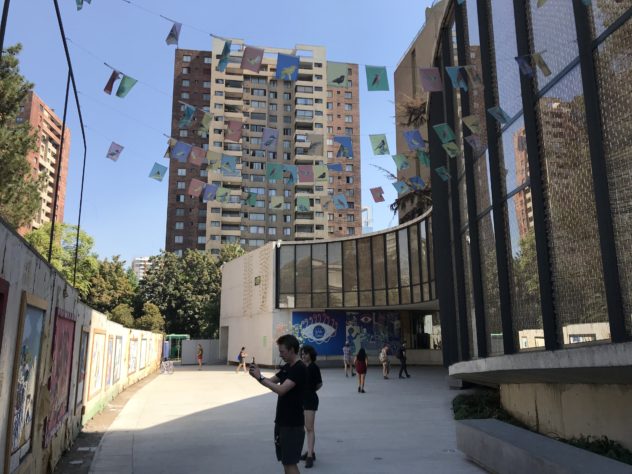
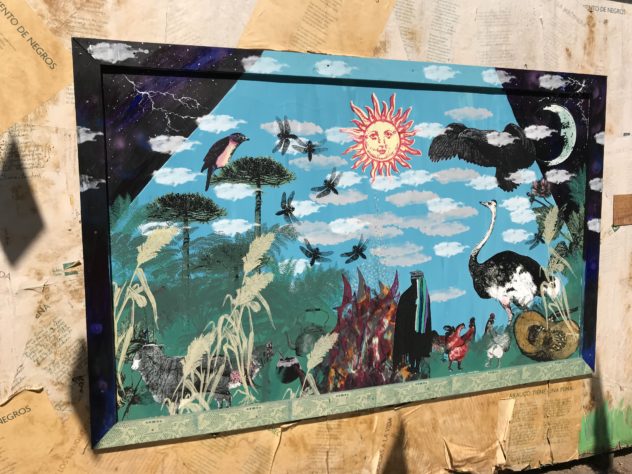
Around the age of 40, Violeta also became heavily involved in visual art, creating all different forms – paintings, paper maché, sculpture, ceramics, and fabric. Her childhood outside of the city heavily influenced both her music and art, as their subject matter often included elements of nature, animals, birds, and plants. (For example, a lot of her works have a dog in them, because she loved dogs and would rescue them off the streets. Of course this woman resonated with me.) Unlike her music, which always presented new lyrics and forms, her art often was recycled; not only was she using recycled materials, she also would make copies or similar versions of her work so it could be disseminated and enjoyed by people all over.
The museum was small, but quite modern and excellently designed. Our tour guide, though I’ve forgotten her name, was fantastic. She first brought us to a room with a video of Violeta painting. In the video, Violeta is answering questions for an interview. As Violeta paints, the interviewer asks, “Why do you only paint with one color?” Violeta historically would choose a color, say green, and then paint all the things she wanted to be green on the canvas before starting another color. Her response: “It takes too long to be constantly washing out my brushes, to constantly be changing out colors. I really just need a secretary to organize and clean all my brushes.”
The video really spoke to her comical and animated character. Our guide explained that the best way to describe Violeta is “intense.” Everything she did, she did intensely. She traveled the world, solely to investigate music and art in as much depth as she could. The museum had a logo of one of her works, a cartoonish eye with long lashes. I asked why that particular piece was chosen to represent the whole museum, and our guide responded that the eye represents what Violeta represented: vision. Violeta always had a vision, a vision to learn as much as possible, to demonstrate what it meant to be a Latin American, a Chilean, and a woman, and to reject the societal norms under machismo. It’s important, too, that they eye is clearly a female eye. She had confidence in herself and all that she did, and for that reason, she is known as “La Violeta Eterna.”


After the video, we entered two rooms of artwork, “lo humano” and “lo divino.” The artwork in the “Human” room consisted of the original eye, a fabric poster, paper maché, and naturally, different depictions of people. The people all have colorful skin – blue, purple, green – to demonstrate the complex differences between humans. Meanwhile, the “Divine” room has work associated with religion. Violeta was Catholic, but she had her own form of mystical, Latina Catholicism, one that rejected the institutionalized practices of the church. One of her works in here, for example, was a painting of the Crucifixion, but she jokingly named it “Cristo en Bikini.”
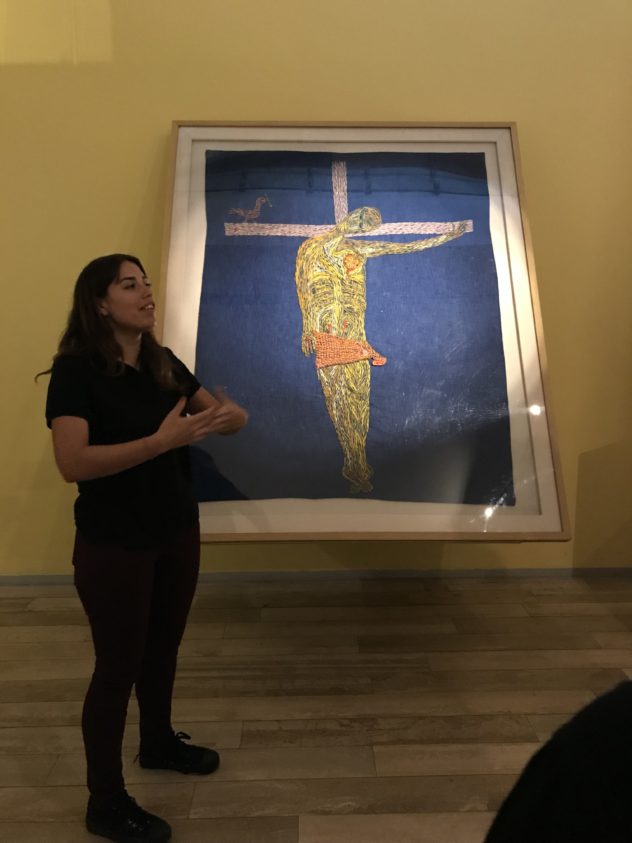
One of her other pieces, which showed her more activist side, was “Contra la Guerra.” Apparently this is the only piece that she formally explained to the public. On the far left is Violeta, in purple. To her right are three friends: an Argentinian, a Chilean, and a Chilean native. The native has a specific flower on his/her head, a sacred flower of the Mapuches. Each is holding a dove, a symbol of peace. Between the Chilean and the Chilean native, there is a gun shooting a bird. The holy woman inside the gun is supposed to represent the negative institutionalized rules of the church, while the bird is supposed to represent liberty and youth. It’s also important that the gun is located between the modern Chilean and the original Chilean, to demonstrate the tension between them to this day. At the top of the piece are the world and different country flags, while half of a guitar lines the left and right side, to show how music can bring people together. Can you tell I was fascinated by all of this yet?

The tour ended in a lovely garden paying homage to Violeta. I honestly feel so blessed to know about her now and won’t soon forget my time at this museum.
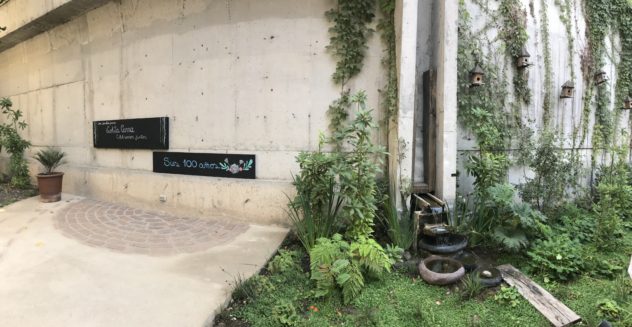
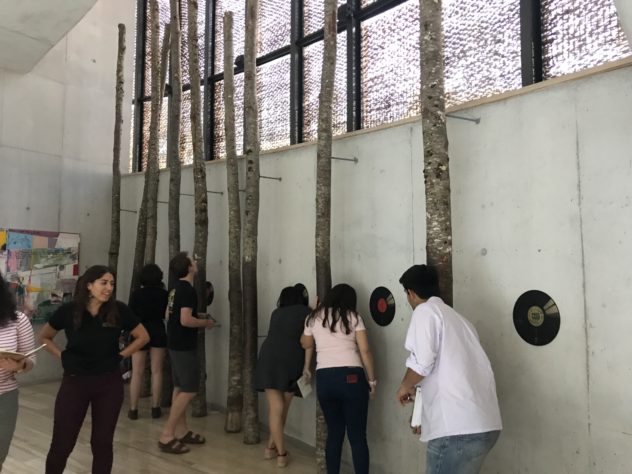
Austin and I are also on a quest to make every group photo we take as awkward as possible. Here’s our handiwork at the end of the tour:
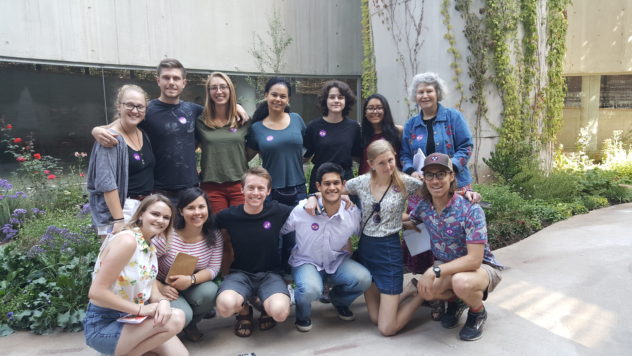

Now on to the less inspiring and more comical part of yesterday: the first terremotos. Austin, David, our classmate Emily, and I went to try terremotos on a very “hip” street, Pío Nono, which is full of beer gardens, restaurants, bars, and clubs. These drinks arrived in legitimate half liter beer steins. It’s no wonder now why our waiter raised his eyebrows at us all ordering our own and that he gave us a bunch of french fries on the house. You start drinking this thing, and because there’s really sweet, fruity syrup and pineapple ice cream in it, you forget that you’re also literally drinking a half liter of new wine. We were there probably at least an hour and a half, highly engaged in discussion, and when we finally left, it was nearly impossible to go home and start homework. Austin ran. For AN HOUR. All I could do was read a couple pages of notes, before wolfing down an enormous dinner and then passing out. Be warned, kids. Terremotos are no joke.
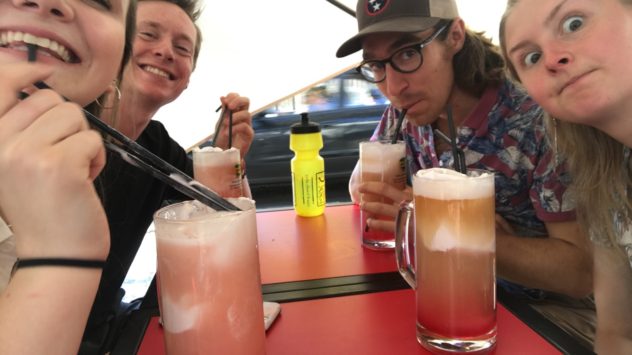
More shenanigans and awkward group photos to come this weekend, hopefully!


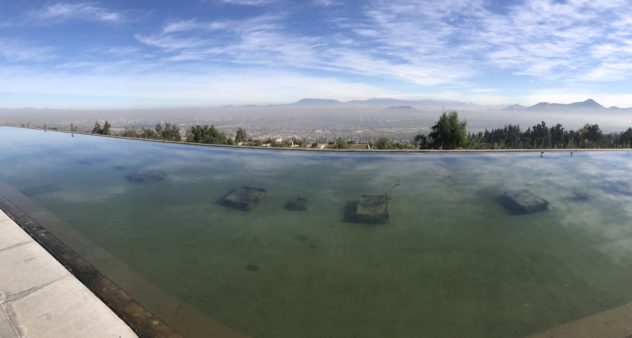
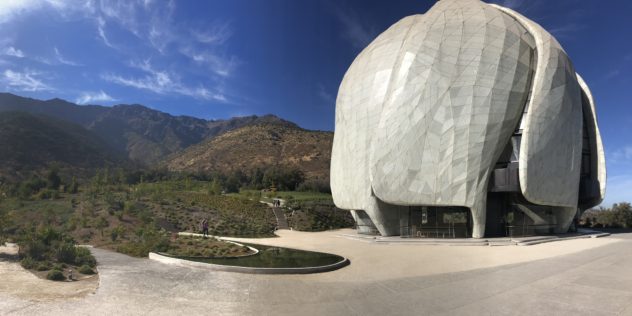


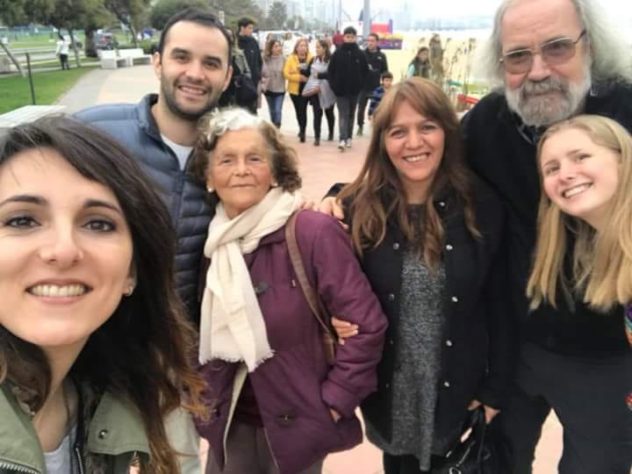
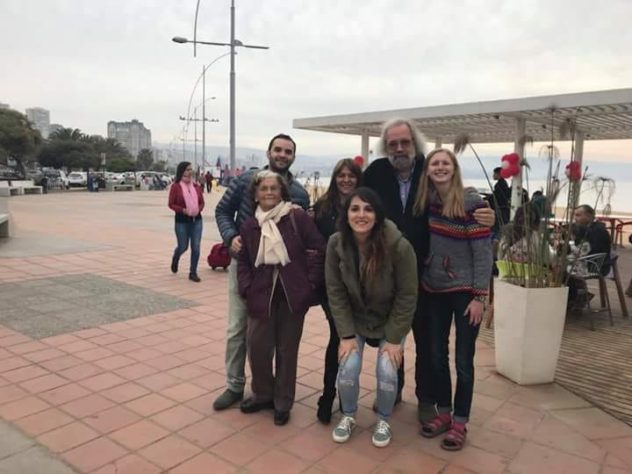
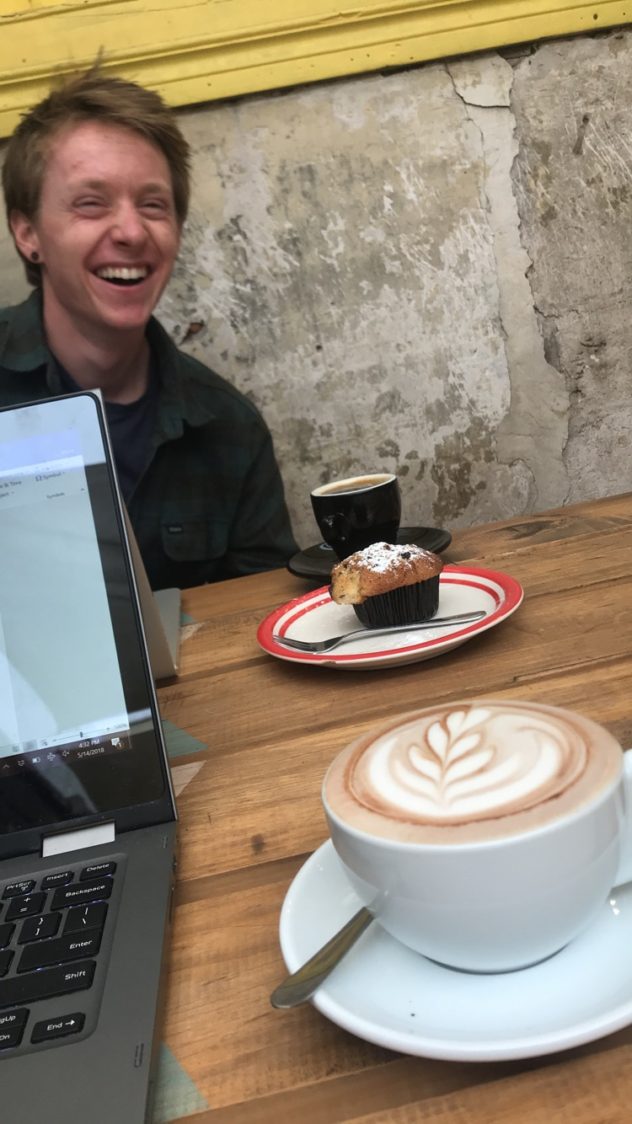
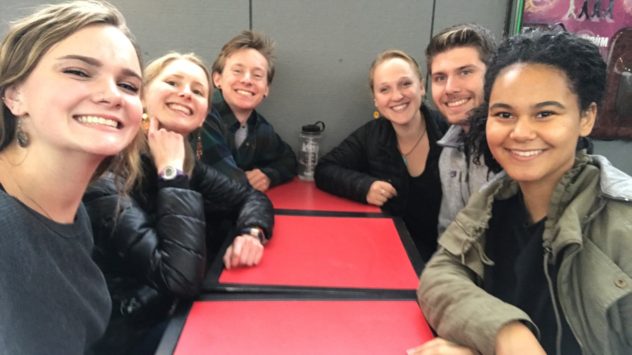
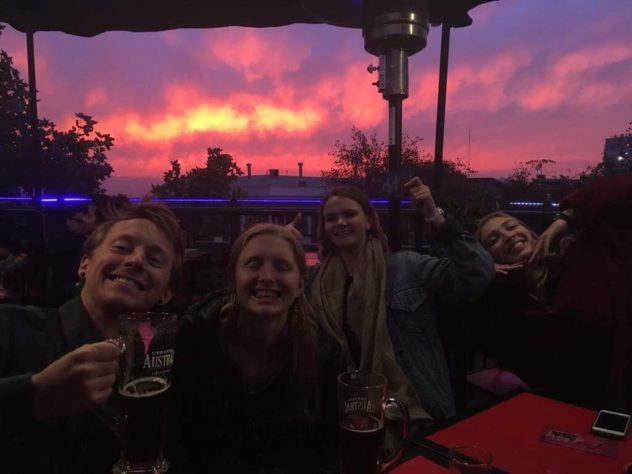



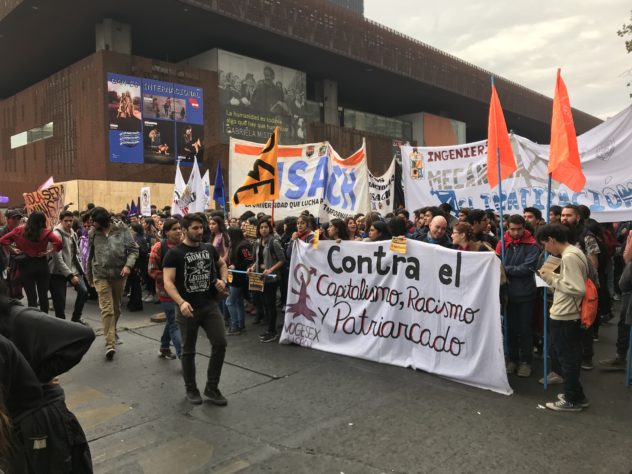
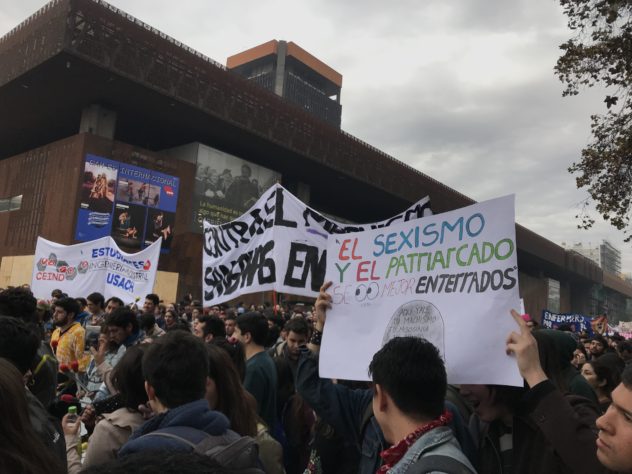
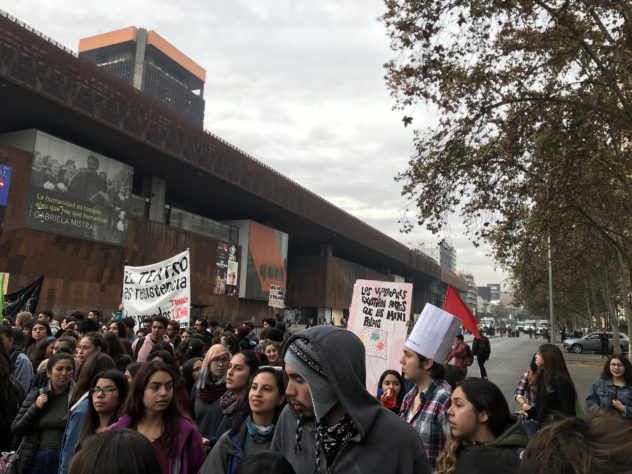
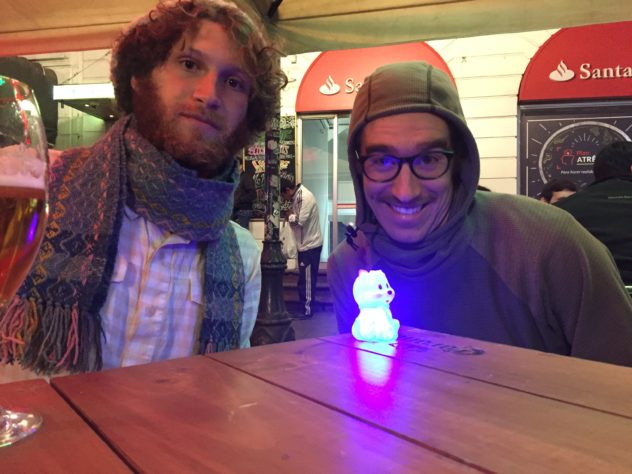
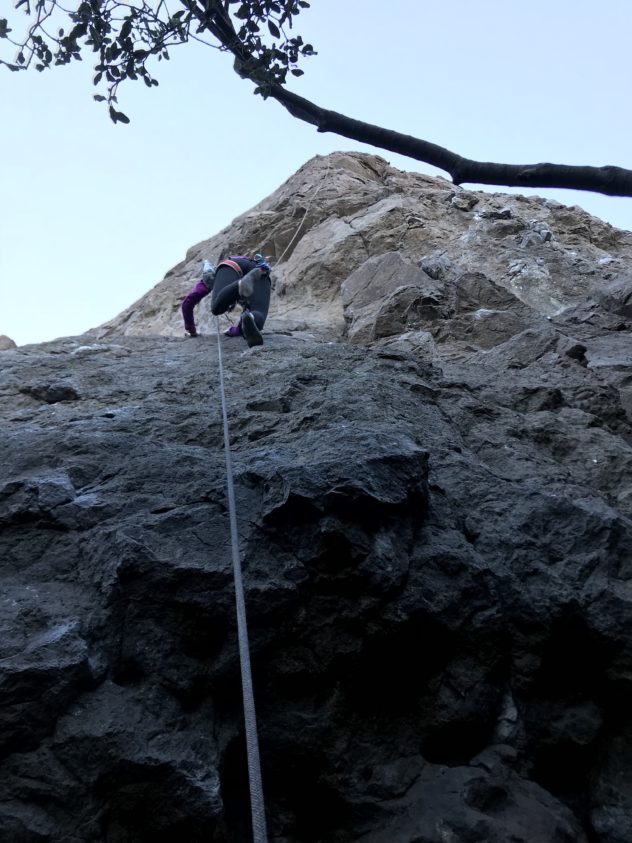
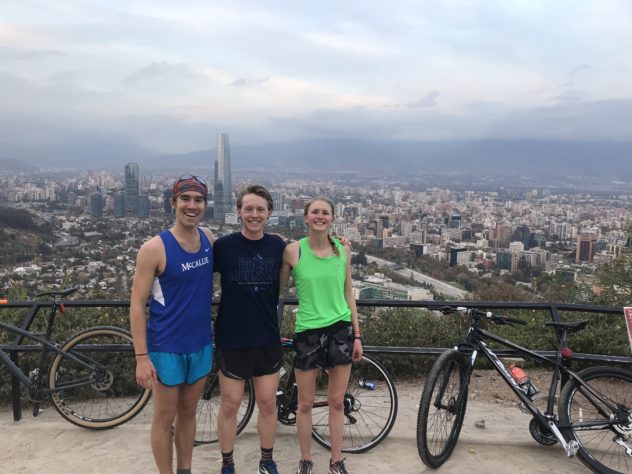

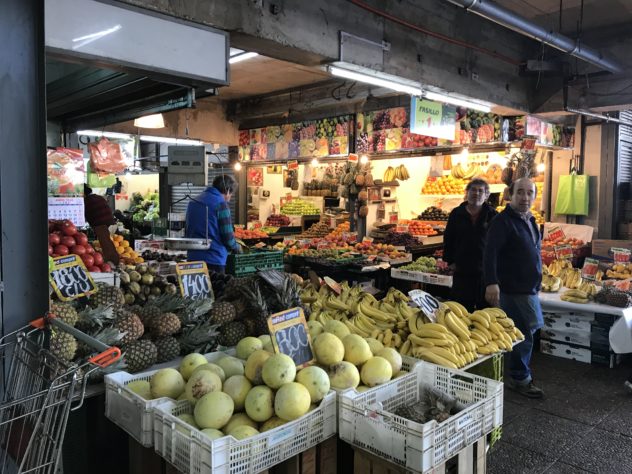



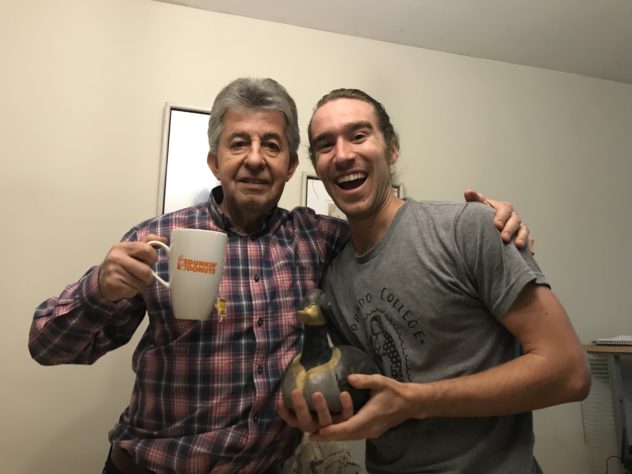

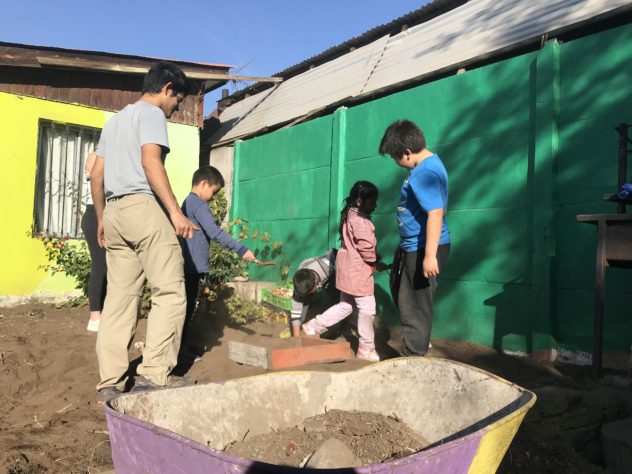
Comments
Super reporting as usual.
I like Violetta…all should have their own form of mystical Catholocism, if they can, but keep it to themselves, if they can.
Pio Nono…named after Pope Pius lX?….supposedly liberal pope?..What’s that about?
Continue to absorb, critically.
Love,
Doc